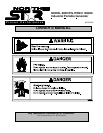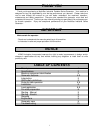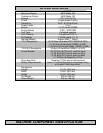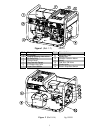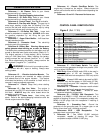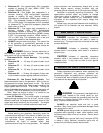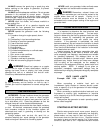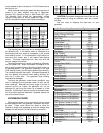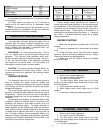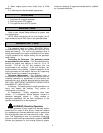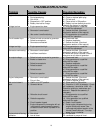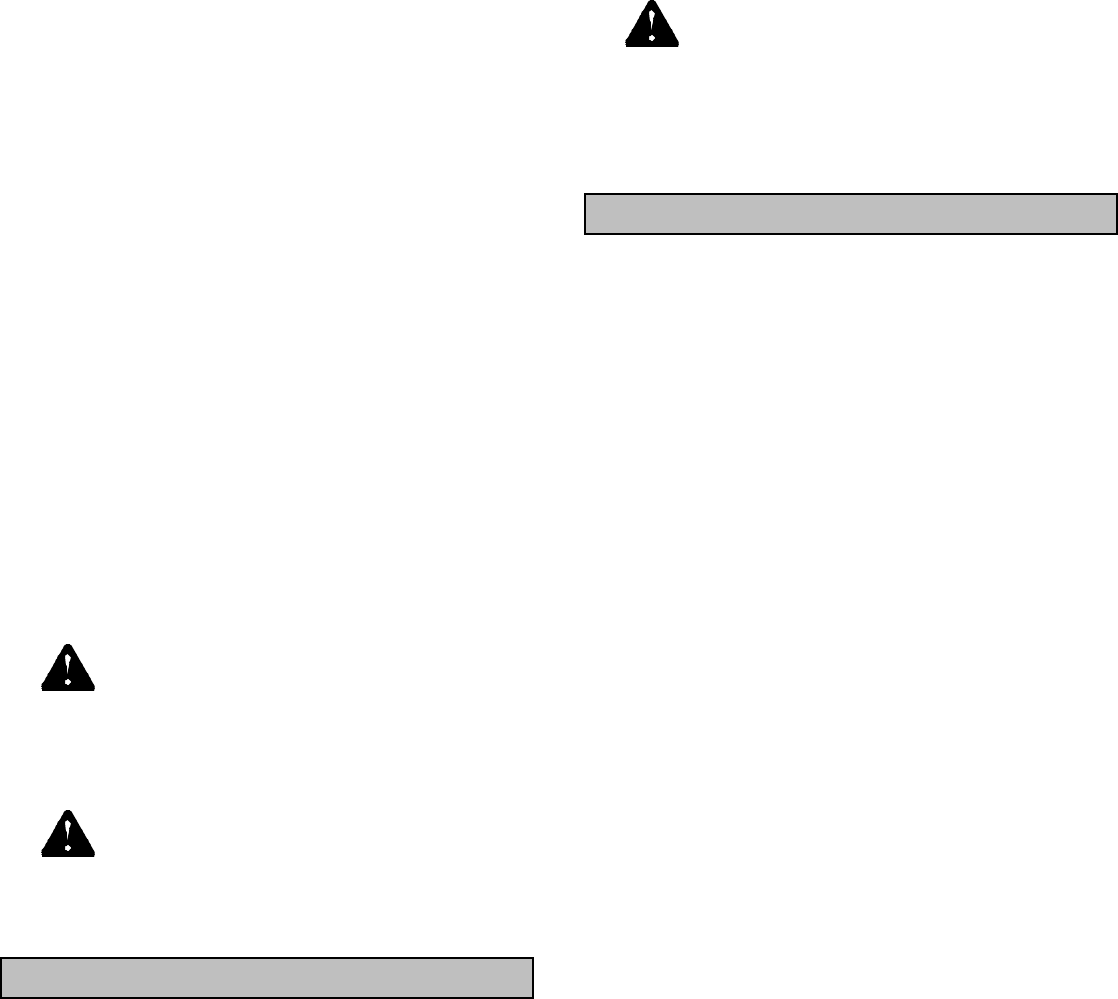
6
ALWAYS remove the spark plug or spark plug wire
before working on the engine or generator, to prevent
accidental starting.
ALWAYS provide adequate ventilation. Do not operate
generator in any enclosed or narrow space. Engines
consume oxygen and give off deadly carbon monoxide
poisonous gas. Improper ventilation will cause damage to
generator and possible injury to people.
NEVER touch hot muffler, hot exhaust manifold or
engine cooling fins.
ALWAYS remove all oil or gasoli ne deposi ts and
accumulated dirt from generator and immediate area.
Keep generator head and engine clean.
NEVER operate the generator under the following
conditions:
A. Excessive change in engine speed, slow or
fast.
B. Overheating in load connecting devices.
C. Sparking or arcs from generator.
D. Loss of electrical output.
E. Damaged receptacles.
F. Engine mi sfire.
G. Excessive vibration.
H. Enclosed compartments, or confined areas.
I. Flame or smoke.
J. Rain, snow or wet conditions.
K. Operator non-attendance.
L. Excessive overload of generator.
M. Wire with too small a gauge for the load.
WARNING Check fuel system on a regular
basis. Look for signs of leaks, deterioration, chafed or
spongy fuel hose, loose or missing fuel hose clamps,
damaged fuel tank or a defective fuel shut-off valve.
Correct any defects before operation.
WARNING Keep the fire extinguisher close
by your generator and be familiar on how to use it.
Consult your local fire department for correct extinguisher
type.
INSTALLATION
OUTDOORS: Choose locations where the generator
will not be exposed to rain, snow or direct sunlight.
Position the generator on secure, level ground so it will not
tip or slide down a hill. Place the generator so that the
exhaust fumes will not be directed towards people.
The installation site must be free from water, moisture,
or dust. All electrical components should be protected
from excessive moisture or the insulation system will
deteriorate and result in grounding or shorting out the
generating system.
Foreign matters, such as dust, dirt, sand, lint, or
abrasive materials can cause damage to the generator
head and engine if allowed into its cooling system.
NEVER install your generator inside confined areas.
Inside installation can cause health hazards or death.
DANGER Remember, exhaust fumes are
deadly carbon monoxide gas, and must be vented to the
outside where there are no people. Cooling air of
sufficient amounts must be allowed to flow in and
exhausted out to ensure proper cooling of the engine and
generator head.
LOAD APPLICATION
It is important to determine the total electrical load
before it is connected to the generator. The two major
factors in determining the life of a generator head are heat
build-up, caused by overloading the generator and
corrosive contaminants that can attack the wiring
insulation. If the generator is overloaded, the wires
become excessively hot and cause the insulation to break
down, reducing its ability to resist corrosive contaminants.
Over time the effectiveness of the insulation is eliminated
and a dead short can result.
Always compare the generator nameplate data with
that of the equipment to be used to ensure that watts,
volts, amperage, and frequency requirements are suitable
for operating equipment. The wattage listed on the
equipment nameplate is its rated output. However, some
equipment may require three to ten times more wattage
than its rating on the nameplate, as the wattage is
influenced by the equipment efficiency, power factor and
starting system. NOTE: If wattage is not given on
equipment nameplate, approximate wattage may be
determined by multiplying nameplate voltage by nameplate
amperage.
VOLTS X AMPS = WATTS
Example: 120V X 5A = 600W
When connecting a resistive load such as
incandescent lights, heaters or common electric power
tools, a capacity of up to the generator full rated wattage
output can be used.
When connecting a resistive-inductive load such as a
fluorescent or mercury light, transformers or inductive
coils, a capacity of up to 0.6 times the generators full rated
output can be used.
Always allow the generator to reach operating speed
before a load is applied.
STARTING ELECTRIC MOTORS
Electric motors require much more current (amps) to
start than to run. Some motors, particularly low cost split-
phase motors, are very hard to start and require 5 to 7
times more current to start than to run. Capacitor motors
are easier to start and usually require 2 to 4 times more
current to start than to run. Repulsion-Induction motors



